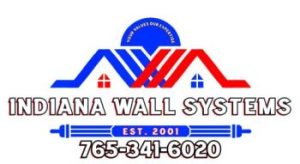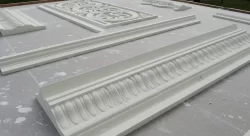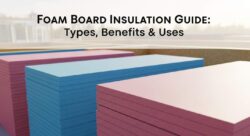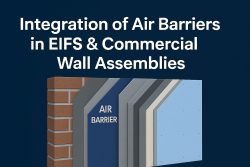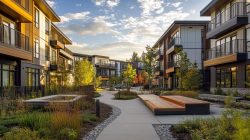Unlock Bold Design Possibilities With Lightweight, Flexible, and Energy-Efficient EIFS Systems
Creating complex building designs can be hard when your materials won’t cooperate. EIFS (Exterior Insulation and Finish Systems) has changed the game for architects who want to push design limits.
This lightweight cladding system lets you craft curved walls, intricate details, and custom shapes that other materials simply can’t match. EIFS makes your bold ideas possible.
Key Takeaways
- EIFS weighs only 2 pounds per square foot, creating a 95% weight savings compared to brick, which allows for complex designs without heavy structural support.
- The system provides R-values of 4-5.6 per inch and cuts air infiltration by over 55%, leading to significant energy savings for building owners.
- Architects can create curved surfaces, intricate details, and custom shapes with EIFS that would be impossible or too costly with traditional materials like brick or stone.
- EIFS systems cost $9-15 per square foot installed, making them more affordable than brick ($15-30) or stone ($35-50+) while offering greater design flexibility.
- Modern drainage EIFS includes special pathways that direct water away from walls, protecting buildings from moisture damage for over 30 years with basic maintenance.
What is EIFS?
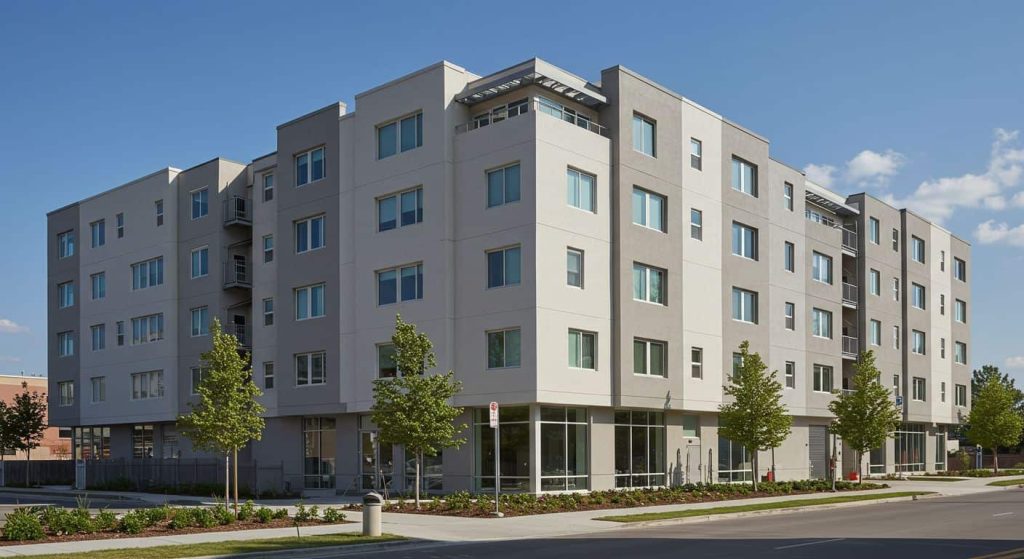
EIFS stands for Exterior Insulation and Finish System, a multi-layered exterior wall covering that combines insulation and design flexibility. This modern cladding system includes insulation board, base coat with mesh, and decorative finish coat – all working together to create stunning architectural features.
Definition of EIFS
EIFS stands for Exterior Insulation and Finish Systems. This modern cladding option works as a non-load bearing wall covering that wraps around your building’s exterior. The system combines insulation boards with special coatings to create a complete thermal barrier.
EIFS gives your property the look of stucco or stone while offering better energy efficiency and design options.
Many building owners choose EIFS because it provides continuous insulation without thermal bridging. The system typically includes adhesive, insulation board, base coat, fiberglass mesh, and a decorative finish coat.
These layers work together to protect your structure while allowing for complex architectural designs that might be impossible with traditional materials like brick or concrete.
Components of an EIFS system
Now that you know what EIFS is, let’s look at the parts that make up a complete EIFS system. Every EIFS installation includes five main components that work together to create a durable, energy-efficient exterior wall system.
- Substrate – This is the base material to which EIFS attaches, often made of plywood, oriented strand board (OSB), or cement board. The substrate forms the structural foundation for the entire system.
- Adhesive – A special bonding material that secures the insulation board to the substrate. This adhesive creates a strong connection between layers for long-term stability.
- Insulation Board – Made from expanded polystyrene (EPS) foam, this layer provides the thermal barrier that gives EIFS its outstanding insulation properties. The foam boards come in various thicknesses to meet different R-value needs.
- Base Coat with Reinforcing Fabric – Applied over the insulation, this layer includes a cement-based mixture and embedded fiberglass mesh. The reinforcing fabric adds strength and crack resistance to the wall system.
- Finish Coat – The outer layer that gives EIFS its final look. This textured acrylic coating comes in many colors and textures, allowing for custom finishes that match your design vision while providing weather protection.
- Drainage Components – Modern EIFS with drainage systems include channels, weep holes, or drainage mats that allow any moisture that enters the system to exit safely, preventing water damage to the building envelope.
- Sealants and Flashings – These materials seal joints and transitions between EIFS and other building materials like windows and doors. Proper sealing stops moisture intrusion at these critical points.
- Trim Accessories – Special pieces used at edges, corners, and openings to create clean lines and proper terminations. These components enhance both the appearance and performance of the cladding system.
Benefits of EIFS for Complex Architectural Designs
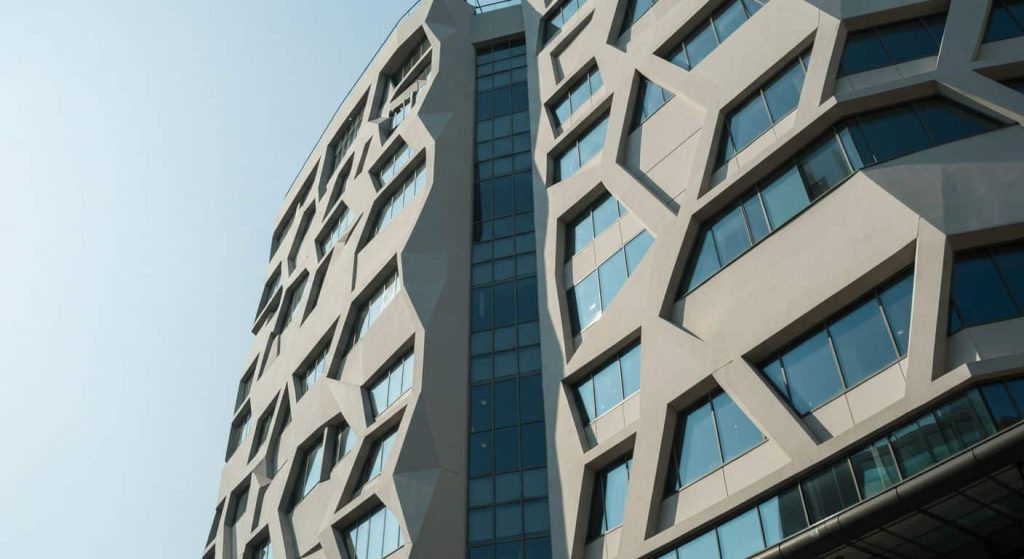
EIFS opens doors to complex designs that other materials simply can’t match. The system combines lightweight flexibility with superior insulation, making it perfect for architects who want to push creative boundaries.
Lightweight and flexible materials
EIFS systems weigh only 2 pounds per square foot – a fraction of traditional materials like brick or stone. This light weight creates major advantages for building owners with complex designs.
You can replace 100,000 square feet of brick with EIFS and reduce structural weight by over 4 million pounds! This 95% weight savings means less stress on your building’s frame and foundation, cutting construction costs and allowing for more design freedom.
The true power of EIFS lies in its ability to transform architectural vision into reality without the structural limitations of heavier materials.
The flexible nature of EIFS materials allows architects to craft curved walls, intricate details, and custom shapes that would be hard or costly with other claddings. The system bends and forms to match almost any design idea.
This mix of light weight and flexibility gives building owners the chance to create unique facades with fewer structural supports and lower costs than traditional materials would need.
Outstanding thermal insulation
EIFS delivers top-notch thermal insulation for your building. The system provides an R-value of 4-5.6 per inch, which can boost your building’s total R-value to R-16 or higher. This means less heat escapes in winter and less cool air leaks out during summer.
Your heating and cooling systems won’t need to work as hard, cutting your energy bills each month.
The thermal barrier created by EIFS also cuts air infiltration by over 55%. This dramatic reduction stops drafts and keeps indoor temperatures stable throughout the year. Unlike other cladding options that may have gaps or thermal bridges, EIFS creates a continuous insulation blanket around your structure.
Next, let’s explore how EIFS offers excellent moisture resistance to protect your investment.
Moisture resistance and management
Drainage EIFS systems excel at keeping buildings dry through smart moisture management. These systems include special pathways and weep holes that direct water away from walls. For building owners, this means less worry about water damage and mold growth that can harm your property value.
The key to this protection lies in proper joint sealing combined with effective drainage systems. Unlike older cladding options, modern EIFS creates a shield against rain, snow, and humidity while still allowing the structure to “breathe.”.
Your building faces constant weather challenges that can lead to costly repairs. EIFS offers outstanding moisture protection through its layered design. The outer finish coat repels water, while the drainage plane behind it catches any moisture that might slip through.
This two-part defense keeps interior walls dry and extends the life of your building. Proper installation ensures these moisture management features work as designed, giving you peace of mind during heavy storms or high humidity conditions.
Enhanced durability and longevity
Beyond keeping moisture at bay, EIFS offers impressive staying power for your building investment. EIFS systems feature a 100% acrylic binder that fights against fading, chalking, dirt, mold, and harmful UV rays.
This protection means your building maintains its fresh look for years without constant upkeep.
Property owners appreciate that EIFS lasts over 30 years with basic maintenance. This extended lifespan translates to real savings compared to other exterior options that might need replacement much sooner.
The durability of EIFS also means fewer repairs and touch-ups, letting you focus on other aspects of building management rather than constant exterior fixes.
Cost-effectiveness
EIFS offers building owners major savings compared to other exterior options. The initial installation costs range from $6-$9 per square foot, making it more affordable than brick, stone, or metal composites.
These savings extend throughout the life of your building too. The system’s durability means fewer repairs and replacements over time. Its excellent insulation properties also cut energy bills by maintaining stable indoor temperatures year-round.
Many owners report lower heating and cooling costs after installing EIFS on their properties. The lightweight nature of EIFS reduces structural requirements, which can lead to additional construction savings on new projects.
Design Versatility with EIFS
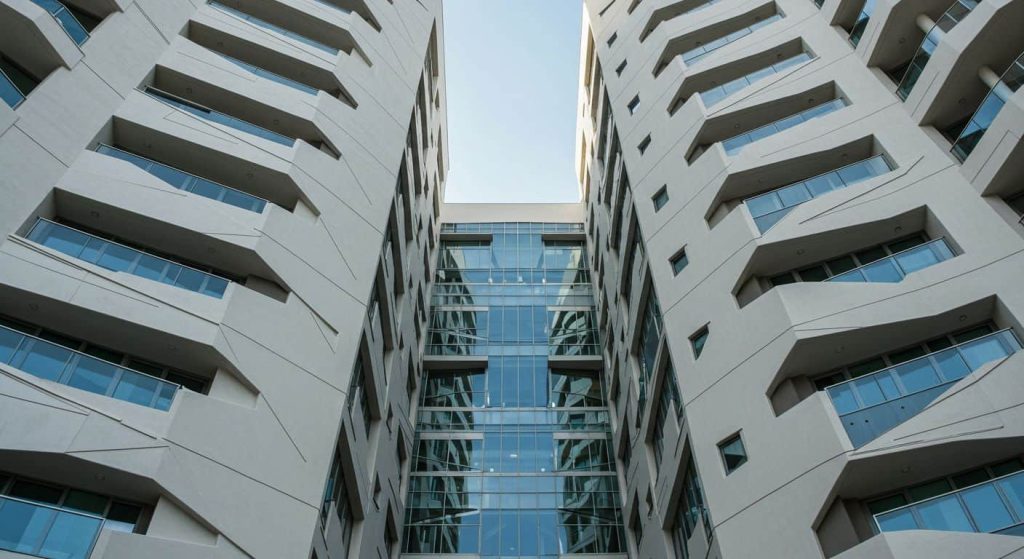
EIFS offers endless design options for architects who want to create bold, unique buildings. The system bends and shapes to fit any vision, from simple clean lines to complex curves that would be impossible with brick or stone.
Custom finishes, textures, and colors
EIFS systems offer building owners complete freedom in design through countless color options, textures, and architectural molding choices. Your building can stand out with unique finishes that match your brand or complement the surrounding area.
The finish coat does more than just protect—it adds textured, aesthetic appeal that transforms plain walls into striking architectural features.
These custom options don’t require structural changes or heavy materials. You can select smooth surfaces that mimic stone, rough textures that resemble stucco, or bold colors that make a statement.
Many building owners appreciate how these finishes maintain their appearance with minimal upkeep, unlike traditional materials that may fade or crack over time. The versatility of EIFS makes complex architecture possible without sacrificing thermal performance or sustainable design principles.
Ability to create intricate shapes and profiles
EIFS gives building owners amazing design freedom for complex shapes and profiles. The system uses lightweight materials that craftsmen can cut, shape, and mold into almost any form.
Your building can feature curved cornices, detailed columns, or custom architectural elements without the weight or cost of stone or precast concrete.
EIFS adapts perfectly to curved surfaces and complex geometric patterns that other materials simply can’t match. Architects love working with this flexible system because it allows them to bring their most creative visions to life.
The material’s adaptability means your building can stand out with unique facade designs and intricate detailing while still maintaining thermal efficiency and weather resistance. This combination of creative freedom and practical performance makes EIFS ideal for projects requiring architectural innovation.
Seamless integration with modern and traditional designs
EIFS blends perfectly with both modern glass structures and classic brick buildings. This system molds to your design vision without forcing you to choose between styles. You can create sharp, clean lines for a sleek office tower or add ornate details to match historic neighborhoods.
The ability to form intricate shapes makes EIFS ideal for mixing design elements across time periods. Building owners enjoy this flexibility when updating older properties or creating new spaces that respect their surroundings.
EIFS adapts to your specific project needs through its custom finishes and textures. The system works equally well on flat surfaces and curved walls, allowing architects to express their creativity.
Many owners find that EIFS helps their buildings stand out while still fitting into the existing landscape. This balance of innovation and tradition makes EIFS a smart choice for complex architectural visions.
Next, we’ll explore how EIFS compares to traditional building materials in performance and cost.
Adaptability for curved and intricate surfaces
EIFS bends and shapes to fit any curved surface your building might need. This makes it perfect for rounded corners, arched entryways, and complex decorative elements that other materials simply can’t handle.
Architects love working with EIFS because it allows them to create flowing lines and organic shapes without the limits of rigid materials. Your building can feature domes, waves, or custom moldings that stand out from standard box-like structures.
The system applies directly to most base surfaces and can be carved or shaped on-site to match exact design specs. This gives you freedom to express unique architectural vision without the high costs of custom stonework or precast concrete.
Many building owners choose EIFS specifically for projects with unusual geometry or where traditional cladding would require complex cutting and fitting. The material creates a smooth, continuous surface even around the most intricate design features.
EIFS vs. Traditional Building Materials: A Comparison
Building owners must weigh several factors when choosing exterior cladding systems. The table below compares Exterior Insulation and Finish Systems (EIFS) with traditional building materials across key performance areas.
| Factor | EIFS | Brick | Stucco | Stone/Concrete |
| Weight | 2 lbs per square foot | 42 lbs per square foot | 14 lbs per square foot | 45+ lbs per square foot |
| Structural Requirements | Minimal support needed | Requires substantial structural support | Moderate structural support | Extensive support system required |
| Design Flexibility | Highly flexible; creates curves, reveals, and complex shapes | Limited to straight walls and simple patterns | Moderate flexibility | Limited by weight and manufacturing constraints |
| R-Value | R-4 to R-5.6 per inch | R-0.2 per inch | R-0.2 per inch | R-0.08 per inch |
| Installation Time | Fast (30-50% faster than traditional materials) | Slow | Moderate | Very slow |
| Labor Skills Required | Specialized but fewer workers needed | Skilled masons required | Skilled applicators needed | Highly skilled labor required |
| Cost | $9-15 per square foot installed | $15-30 per square foot installed | $7-12 per square foot installed | $35-50+ per square foot installed |
| Maintenance | Periodic cleaning; recoating every 15-20 years | Tuckpointing every 25 years; cleaning | Regular inspections; repainting | Sealing; crack repair; cleaning |
| Environmental Impact | Lower carbon footprint due to weight and energy savings | High embodied energy; difficult to recycle | Moderate carbon footprint | Very high carbon footprint; resource-intensive |
| Weight Savings Example | Replacing 100,000 square feet of brick with EIFS reduces over 4 million pounds (95% weight savings) | |||
The dramatic weight difference between EIFS and traditional materials brings substantial benefits for building owners. These include reduced structural costs, simpler foundation requirements, and decreased transportation expenses. Many architects now specify EIFS for projects requiring complex facades because the lightweight nature allows creative freedom without structural constraints.
EIFS and Energy Efficiency
EIFS systems create a solid thermal blanket around buildings, cutting heating and cooling costs by up to 30%. This continuous layer stops heat from escaping through walls in winter and blocks hot air from entering in summer, making EIFS a top choice for energy-smart construction.
Continuous insulation for thermal performance
EIFS systems provide complete thermal coverage across your building’s exterior walls. This continuous layer stops heat from escaping through studs and framing—a common problem with traditional insulation methods.
Your building maintains a consistent R-value of 4 to 5.6 per inch, meeting all North American Continuous Insulation requirements. This creates an unbroken thermal barrier that wraps your structure like a blanket.
The results show up clearly in your energy bills. Continuous insulation cuts heating and cooling costs by preventing thermal bridging—those spots where heat moves through wall studs.
The EPS insulation used in EIFS creates this seamless barrier while adding minimal weight to your structure. Many building owners report lower HVAC usage after switching to continuous insulation systems, making EIFS a smart choice for energy-efficient building practices.
Reduction of thermal bridging
Continuous insulation creates a thermal blanket around your building, but it also tackles a hidden energy thief: thermal bridging. This problem occurs when heat escapes through parts of your wall that conduct energy faster than others.
EIFS systems cut thermal bridging by up to 65% through their seamless exterior coverage. The system wraps your building in an unbroken layer of insulation that blocks heat transfer through studs, fasteners, and joints.
Thermal bridges waste energy and money in traditional construction. They create cold spots that lead to comfort issues and even moisture problems. EIFS cladding eliminates these weak points by providing complete coverage without gaps.
Your building stays warmer in winter and cooler in summer, saving on heating and cooling costs while maintaining consistent indoor temperatures. This structural flexibility makes EIFS ideal for complex architectural designs that need both visual appeal and high performance.
Contribution to sustainable building practices
EIFS plays a major role in green building efforts across the country. The system helps buildings meet strict LEED standards through its energy-saving features. EIFS provides continuous insulation that cuts heating and cooling costs dramatically.
This makes buildings more eco-friendly while saving owners money each month on utility bills.
EIFS meets ASHRAE 90.1 requirements and satisfies LEED EA Prerequisite 2 standards. The materials used in EIFS reduce waste during construction and need less frequent replacement than other cladding options.
Building owners benefit from this sustainable approach through lower lifetime costs and a smaller carbon footprint. Many projects now choose EIFS specifically for these green building advantages that combine performance with environmental care.
EIFS and Sustainability
EIFS systems help building owners meet green standards while cutting waste. These systems use less raw material than other cladding options and offer eco-friendly features from start to finish.
Alignment with green building standards (e.g., LEED)
EIFS systems align perfectly with LEED certification requirements, helping building owners meet sustainability goals. Modern EIFS products contribute to multiple LEED credits, including MR Credit 1.1 for building reuse and MR Credit 2 for waste management.
The system also supports MR Credit 4 through recycled content and MR Credit 5 by using regional materials. These features make EIFS a smart choice for sustainable construction projects.
LEED 2009 demands at least 10% energy performance improvement over ASHRAE 90.1 standards – a target EIFS helps achieve through its superior insulation properties. Building owners who choose EIFS gain an edge in green certification while creating high-performance exteriors with minimal maintenance needs.
The exterior wall cladding system delivers both architectural aesthetics and environmental benefits, making it ideal for projects where sustainable architecture is a priority.
Reduction in material consumption
Beyond meeting LEED standards, EIFS systems directly cut down on material usage in construction projects. The lightweight nature of EIFS means less raw materials go into each square foot compared to brick, stone, or metal panels.
This reduction creates less waste during installation, with most EIFS components being recyclable or reusable.
Building owners benefit from this material efficiency through lower initial costs and reduced life-cycle expenses. Unlike traditional cladding options that require more structural support and foundation work, EIFS needs minimal backing due to its light weight.
The system’s long lifespan also means fewer replacement materials over time, making it an eco-friendly choice for contemporary architecture projects focused on sustainable design.
Eco-friendly properties of EIFS materials
EIFS materials offer major green benefits for your building projects. The lightweight design cuts down on resource use and shrinks carbon footprints during transport and installation.
Most EIFS components can be recycled or reused, which means less waste ends up in landfills. The system’s excellent insulation properties help buildings stay energy-efficient year-round, reducing heating and cooling needs.
This sustainable design choice supports green building standards like LEED certification through its thermal performance and long lifespan.
Many modern EIFS products now include eco-friendly ingredients like low-VOC finishes and water-based adhesives. These materials improve indoor air quality while reducing harmful emissions.
The durability of EIFS also means fewer replacements and repairs over time, which saves resources and energy. Building owners who choose EIFS for their exterior cladding make a smart investment in both architectural creativity and environmental responsibility.
Types of EIFS Systems
EIFS systems come in two main types – Barrier EIFS that acts as a single protective shield and Drainage EIFS that channels water away from walls – each offering unique benefits for your next building project.
Barrier EIFS
Barrier EIFS represents the original form of exterior insulation and finish systems in the building industry. This system creates a solid barrier against weather elements through its vapor retarder and protective acrylic finish.
Building owners appreciate barrier EIFS for its high-end appearance and ability to create detailed facades without the weight of traditional cladding materials.
The system relies heavily on proper installation to maintain its weather-resistant properties. Each layer must be applied correctly to prevent moisture issues down the line. Many modern design projects still use barrier EIFS for its architectural versatility and cost advantages, especially in drier climates where moisture concerns are minimal.
The smooth, continuous surface offers both insulation benefits and design complexity options not found in other exterior finishes.
Drainage EIFS
Drainage EIFS stands out as the most advanced exterior insulation system on today’s market. This system features built-in moisture management through special drainage pathways and weep holes that allow water to escape if it gets behind the cladding.
Building owners appreciate this design because it adds an extra layer of protection against water damage, making it ideal for areas with heavy rainfall or harsh weather conditions.
The drainage channels work like tiny gutters within the wall system, directing moisture away from your building’s structure.
Many experts consider drainage EIFS the smarter choice for complex architectural designs due to its fail-safe approach to moisture control. The system creates a pressure-equalized rainscreen that stops water from being forced into the wall assembly.
This design reduces repair costs and extends the life of your building’s exterior while still providing all the design flexibility that makes EIFS popular. Next, let’s explore how EIFS installation processes ensure these systems perform at their best.
EIFS Detailing: Creative Edges and Cornice Work for Elegant Facades
EIFS systems excel at creating stunning architectural details that make buildings stand out. Your property can feature elegant cornices, bold trim, and complex shapes without the weight or cost of stone or concrete.
EIFS offers countless colors, textures, and molding options that transform plain walls into works of art. The material cuts and shapes easily, allowing craftsmen to form intricate profiles that match your exact design vision.
The beauty of EIFS detailing lies in its adaptive design potential for both modern and classic styles. Decorative bands, keystones, and custom facade elements install quickly and cost less than traditional materials.
These lightweight components don’t require extra structural support, making them ideal for both new construction and renovation projects. The finished details resist weather damage while maintaining their crisp, clean lines for years with minimal upkeep.
Installation Process for EIFS
The EIFS installation process requires careful planning and skilled labor to achieve optimal results. Proper application techniques ensure the system delivers its full benefits of insulation, moisture protection, and design flexibility.
Overview of installation steps
EIFS installation follows a clear sequence that building owners should understand. First, crews attach insulation boards to the wall using special adhesives or mechanical fasteners.
This creates the foundation for the system’s thermal benefits. Next, workers apply a base coat over the insulation and embed reinforcing mesh into it. This mesh gives the wall strength and impact resistance.
After the base coat dries, installers apply the finish coat that creates the final textured look of your building. Each step must be done in the right order with proper drying time between layers.
Proper installation ensures your EIFS wall system delivers its promised benefits of insulation and design flexibility. Careful inspection during each phase helps prevent future problems with your building’s exterior cladding.
Importance of proper application techniques
After learning the steps of EIFS installation, proper application techniques become vital to your building’s success. Expert installation makes all the difference in how your EIFS system performs over time.
Correct application prevents common defects like improper substrate preparation that can lead to costly repairs later.
Proper joint sealing stands as a critical element in EIFS performance. Missing or incorrect flashing creates paths for water to enter your building. The right techniques ensure your innovative cladding maintains its fire resistance and insulation properties.
Building owners who invest in skilled installers enjoy the full advantages of EIFS with fewer maintenance issues and longer system life.
Common Applications of EIFS in Architectural Projects
EIFS transforms commercial buildings with striking facades that capture attention and boost property value. Homeowners choose EIFS for custom residences where unique exterior details and energy efficiency matter most.
Use in commercial buildings
Commercial buildings across America choose EIFS for both beauty and function. The Peabody Hotel in Orlando, Florida stands as a prime example since its opening in 1986. This landmark showcases how EIFS creates stunning facades while providing excellent insulation.
Building owners appreciate the system’s ability to form intricate designs that would cost much more with traditional materials.
EIFS offers commercial properties a perfect blend of high-performance insulation and unique design options. The lightweight cladding reduces structural demands while its moisture resistance protects your investment long-term.
Many building owners report lower energy bills after EIFS installation due to its continuous insulation layer. The low maintenance requirements also mean fewer repair costs over your building’s lifetime.
Residential applications
EIFS offers homeowners a perfect blend of beauty and function for their houses. Many families choose EIFS for their homes because it meets North American Continuous Insulation standards while looking great.
The system wraps houses in a protective layer that keeps heat inside during winter and outside during summer. Homeowners love how EIFS can mimic stone, brick, or wood without the high cost of these materials.
The lightweight nature of EIFS makes it ideal for adding decorative elements like columns, arches, or detailed trim work to homes without structural changes.
Custom homes benefit most from EIFS’s design flexibility and weather resistance. Architects can create unique home exteriors that stand out in any neighborhood. The system works well for both new construction and home renovations where owners want to update their home’s appearance.
EIFS insulation helps reduce energy bills year-round, making it a smart investment for budget-conscious homeowners. Next, we’ll explore how proper inspection and maintenance ensure your EIFS system performs at its best for years to come.
Projects requiring unique facades and finishes
Luxury hotels, museums, and corporate headquarters often need striking exteriors that stand out. EIFS delivers these unique facades through countless colors, textures, and architectural molding options.
Building owners can achieve curved surfaces, deep reveals, and intricate patterns that would cost much more with traditional materials. The system allows for custom designs that match brand identity or create landmark status for your property.
Many high-profile projects use EIFS to create intricate facades that would be impossible with other claddings. The material bends and shapes to form complex architectural details while maintaining its insulation benefits.
Your building can feature decorative columns, elaborate cornices, or custom profiles without the weight issues of stone or concrete. This design freedom makes EIFS ideal for projects where visual impact matters as much as building performance.
Addressing Challenges with EIFS
EIFS systems face challenges that need expert handling to avoid costly repairs. Regular checks and proper installation methods prevent water damage and extend the life of your building’s exterior.
Preventing moisture intrusion
Moisture control stands as the top priority in EIFS systems for building owners. Proper joint sealing creates a tight barrier against water, keeping your walls dry and damage-free.
The drainage systems built into high-performance EIFS direct any water that might enter away from the wall structure. These features work together to protect your building’s integrity and extend its life span.
Careful substrate preparation forms the foundation of moisture resistance in EIFS projects. Skipping this step often leads to serious defects down the road. Building science experts recommend regular inspections of all seals and joints, especially after severe weather.
Your next consideration should be the inspection and repair process that maintains these moisture barriers over time.
Ensuring proper maintenance
EIFS systems last over 30 years with proper care. Regular checks keep your building looking great and prevent costly repairs. Building owners must inspect sealants every 2-3 years and reapply them as needed.
This simple step stops water from getting behind the cladding and causing damage to the system. Clean surfaces with mild soap and water to remove dirt and debris that could harm the finish.
Avoid pressure washing, which may force water into the system and create problems. Small cracks should be fixed right away before they grow into major issues.
A maintenance plan helps track what needs to be done and when. Schedule yearly inspections with a qualified professional who knows EIFS systems. They can spot potential issues early – before they become expensive problems.
Keep records of all maintenance work for future reference. The small cost of regular upkeep protects your investment in this sustainable design solution and extends the life of your building’s exterior.
Inspection and repair considerations
Regular EIFS inspections help building owners spot small issues before they become costly problems. Look for cracks, stains, or damage to the finish coat every six months. These checks should focus on areas where water might enter – around windows, doors, and roof connections.
Proper drainage systems need special attention, with flashing, weep holes, and drainage paths checked for blockages that could trap moisture.
Repairs to EIFS should always be handled by qualified professionals who understand the system’s layers. The finish coat typically needs renewal every 15-20 years to maintain its protective qualities.
Small cracks can be sealed with compatible caulking, but larger damage might require patch repairs that match the original texture and color. Quick action on repairs prevents moisture from compromising your building’s insulation value and structural integrity.
Trends in EIFS for the Future
EIFS systems continue to evolve with new materials that boost durability while reducing environmental impact – read on to discover how these innovations can transform your next building project.
Innovative cladding designs
EIFS opens new doors for building owners through cutting-edge cladding designs that were impossible with traditional materials. Modern EIFS systems feature curved panels, textured surfaces, and custom shapes that transform ordinary buildings into architectural masterpieces.
Prefabricated EIFS panels now speed up installation while improving quality control – a major advantage for complex projects with tight deadlines.
These innovative designs support net-zero energy goals through superior insulation properties. The lightweight nature of EIFS allows for bold design choices without adding structural stress to your building.
Many architects create 3D effects, deep reveals, and intricate patterns that catch the eye while maintaining energy performance. Your building can stand out with these design options that blend beauty and function.
Advanced materials for enhanced performance
EIFS manufacturers now offer advanced materials that boost performance beyond basic systems. New polymer-based finishes resist fading, cracking, and dirt buildup far better than earlier versions.
These materials stand up to harsh weather while keeping their color and texture for years. The latest basecoats contain fibers that add strength and crack resistance, making buildings more durable in extreme conditions.
Modern EIFS systems feature enhanced fire-resistant components that meet stricter testing standards. The industry has developed special additives that improve moisture management and increase the lifespan of the entire system.
These eco-efficient materials align with sustainable construction goals while delivering superior protection. Next, let’s explore how EIFS fits into the growing trends of sustainable architecture.
Growing use in sustainable architecture
EIFS systems play a vital role in today’s green building movement. Building owners now recognize how these systems support eco-friendly construction goals through superior insulation and reduced energy needs.
The continuous insulation layer blocks heat transfer better than traditional materials, cutting heating and cooling costs by up to 30%. This makes EIFS a smart choice for projects seeking LEED certification or other green building standards.
Architects embrace EIFS for sustainable design because it creates less waste during installation and requires fewer raw materials than brick or stone facades. The lightweight nature of EIFS means buildings need less structural support, reducing the carbon footprint of construction projects.
Many building owners report that EIFS-clad structures maintain comfortable indoor temperatures with less energy use, directly supporting the growing focus on eco-efficiency in modern construction practices.
Conclusion
Complex designs need the right building materials, and EIFS stands out as a perfect match. Architects love its shape-shifting nature that brings their boldest ideas to life. The system combines beauty with function – offering energy savings while creating stunning facades.
Building owners gain both short-term cost benefits and long-term value through reduced energy bills and minimal upkeep. For your next project with curves, angles, or unique details, EIFS delivers the design freedom and practical benefits that other claddings simply cannot match.
FAQs
What makes EIFS ideal for complex architectural designs?
EIFS features flexibility that allows it to form unique shapes and curves that other claddings like traditional stucco cannot achieve. It gives architects and builders freedom to create bold design elements while meeting strict design requirements.
How does EIFS support sustainable design revolution?
EIFS is great for energy efficiency because it creates a continuous insulation barrier around buildings. This helps cut energy costs and supports green building goals – making it a smart choice for the sustainable design revolution.
What are common EIFS defects builders should watch for?
Water damage is the most common EIFS defect when not installed correctly. Proper flashing, sealing, and regular checks of the sheathe beneath can prevent these issues and extend your building’s life.
How does EIFS compare to traditional stucco?
EIFS offers better insulation and design possibilities than traditional stucco. While stucco and EIFS look similar, EIFS facilitates more complex shapes, weighs less, and provides superior thermal protection.
Why should you consider EIFS for your next project?
The design flexibility and energy savings make embracing EIFS smart for modern construction. It allows for architectural expression that would be costly or impossible with other materials.
What is the future of EIFS in architectural design?
The future of EIFS looks bright as more builders recognize its potential for both beauty and function. New EIFS forms and techniques continue to expand what’s possible, pushing the boundaries of architectural design.
